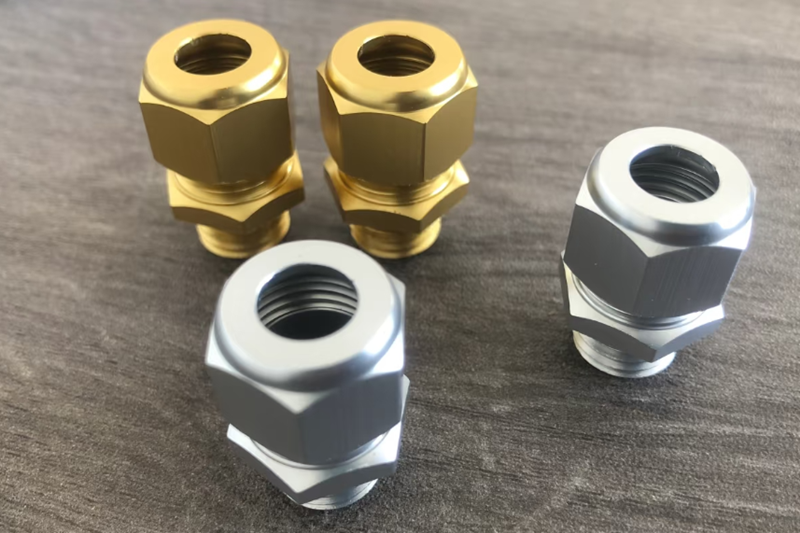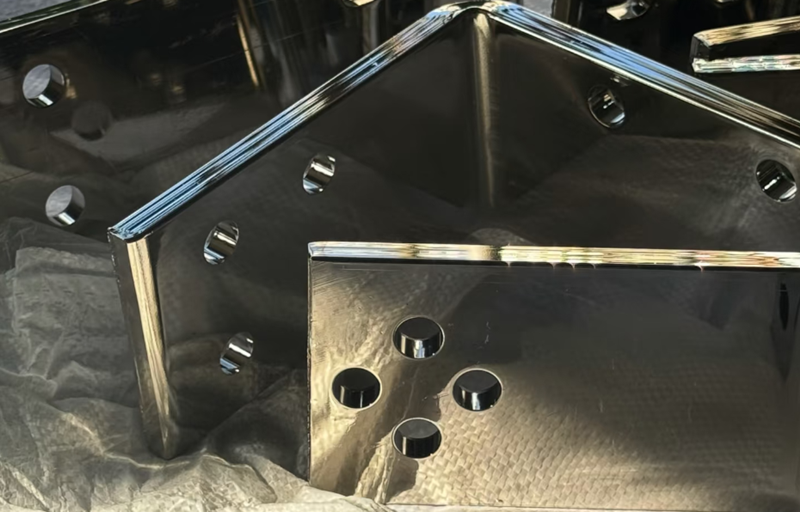Can you Zinc Nikel Gold Plate Aluminum?
Advantages of Aluminum and Aluminum Alloys
Aluminum and its alloys are widely used due to their excellent properties such as good electrical conductivity, fast heat transfer, low density, and ease of forming. However, they also have disadvantages like low hardness, poor wear resistance, susceptibility to intergranular corrosion, and difficulty in welding, which can limit their application. To address these shortcomings, modern industries have employed electroplating techniques to enhance the functionality and performance of aluminum materials.
Advantages of Electroplating Aluminum
Enhances decorative appeal.
Increases surface hardness and wear resistance.
Reduces friction coefficient, improving lubrication.
Improves surface electrical conductivity.
Enhances corrosion resistance, including in combination with other metals.
Facilitates welding.
Improves bonding strength with rubber during hot pressing.
Increases reflectivity.
Repairs dimensional tolerances.
Since aluminum is a highly reactive metal, it requires a chemical transformation process before electroplating. Pre-treatments such as zinc immersion or alloy coatings (e.g., zinc-iron, zinc-nickel alloys) ensure a strong intermediate layer, followed by a cyanide copper plating layer to establish good adhesion. Care must be taken, especially with die-cast aluminum, to avoid surface defects like pinholes, acid bleeding, or peeling.
Electroplating Process for Aluminum
The typical process for electroplating aluminum includes the following steps:
Degreasing → Alkaline Etching → Activation → Zinc Replacement → Activation → Electroplating (nickel, zinc, copper, etc.) → Chromium Plating or Passivation → Drying

Common Electroplating Types
Zinc Electroplating
Zinc coatings are primarily used for protecting steel and iron products. Zinc's negative standard electrode potential provides reliable electrochemical protection. The zinc-plated layer often appears in a variety of finishes, including blue zinc, black zinc, and rainbow zinc.Applications: Zinc electroplating is commonly used in industrial and marine environments to safeguard steel components, offering reliable corrosion protection.
Nickel Electroplating
Nickel plating is a versatile and popular choice for its decorative and protective qualities. Variants include pearl nickel, satin nickel, and black nickel. It provides excellent corrosion resistance and enhances the appearance of the plated object.Applications: Nickel plating is widely used in sports equipment, lighting fixtures, and various electronics, combining aesthetic appeal with durability.
Gold Electroplating
Gold plating is valued for its superior conductivity and high-end decorative effect. However, due to its cost, it is often reserved for specialized applications.Applications: Gold plating is commonly employed in electronic components such as high-precision wire terminals, enhancing both conductivity and corrosion resistance.
Copper Electroplating
Copper plating is a widely used technique, with options like cyanide copper, acid copper, and white tin-copper. Copper plating serves both decorative and functional purposes.Applications: Copper plating is used in jewelry for its bright appearance and in electronics for its excellent conductivity. However, its tendency to discolor requires careful application and post-plating treatments.
Common Issues and Solutions
Peeling:
Cause: Poor zinc replacement, improper activation, or inadequate surface cleaning.
Solution: Adjust the zinc replacement time, activation method, or pre-treatment process.
Rough Surface:
Cause: Impurities in the plating solution or a rough substrate.
Solution: Filter the plating solution and properly polish the substrate.
Yellowing:
Cause: Poor low-potential current distribution.
Solution: Modify the positioning of workpieces and add leveling agents.
Burring:
Cause: Contaminated plating solution.
Solution: Enhance filtration and treat the solution appropriately.
Operating Precautions for Electroplating Aluminum
Use aluminum-specific racks for mounting.
Perform post-etching processes quickly to prevent re-oxidation.
Limit the zinc immersion time to avoid over-corrosion.
Ensure thorough rinsing between steps.
Avoid power interruptions during the plating process.
By understanding the advantages, process flow, and applications of different plating types, as well as addressing common issues and adhering to quality standards, the performance and application range of aluminum can be significantly enhanced.
